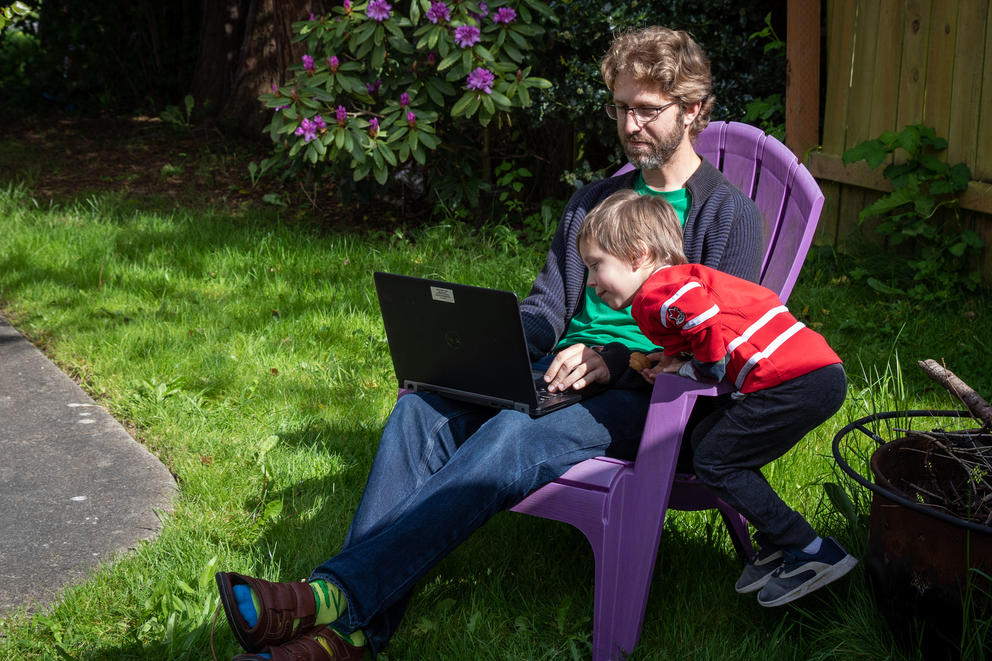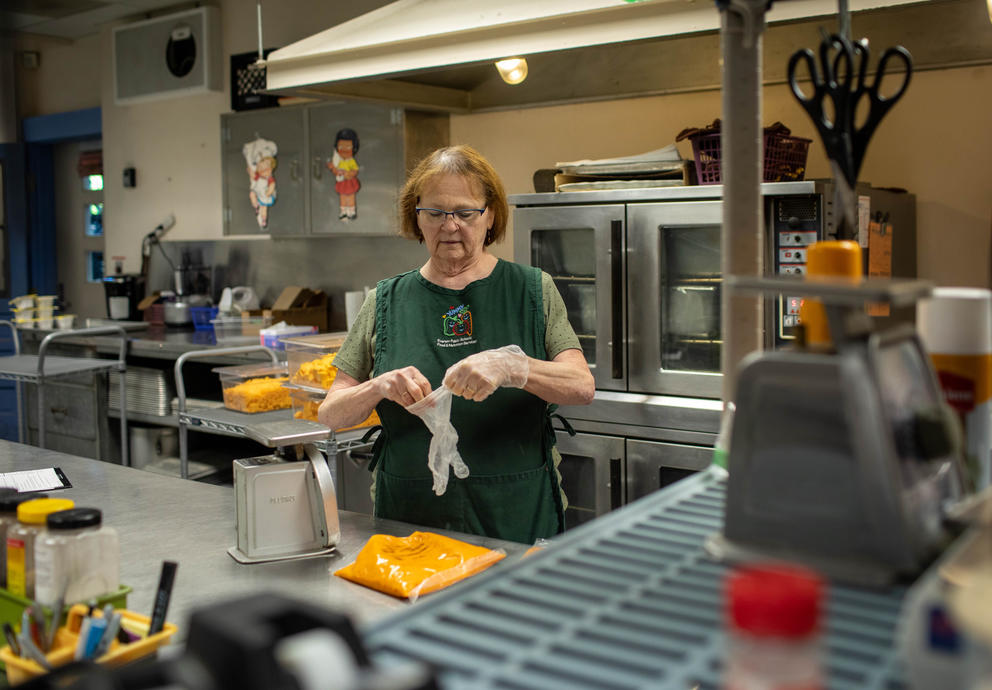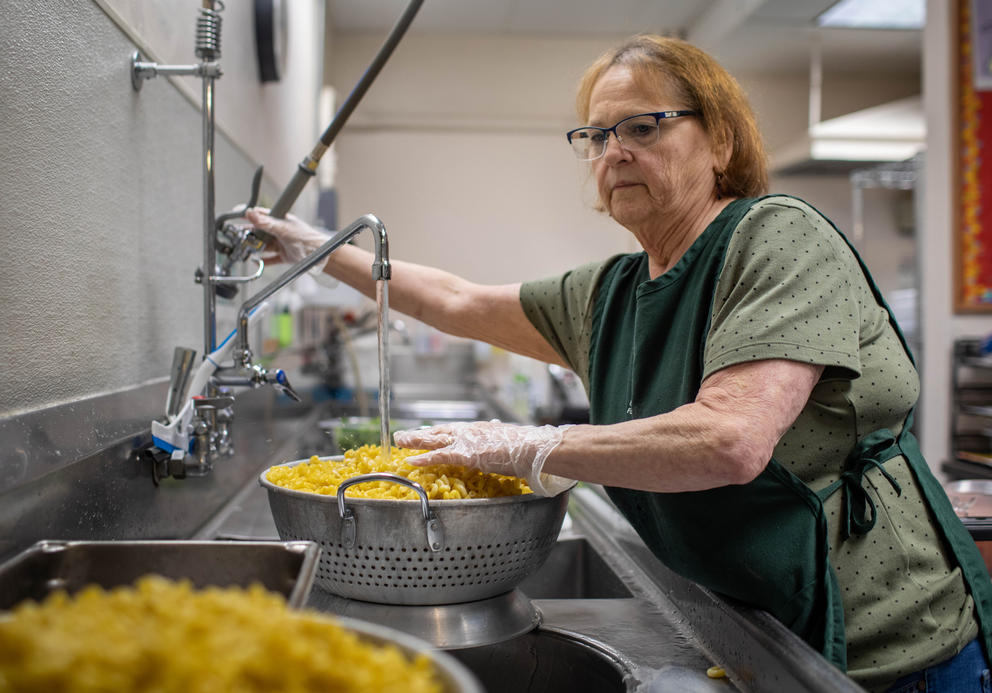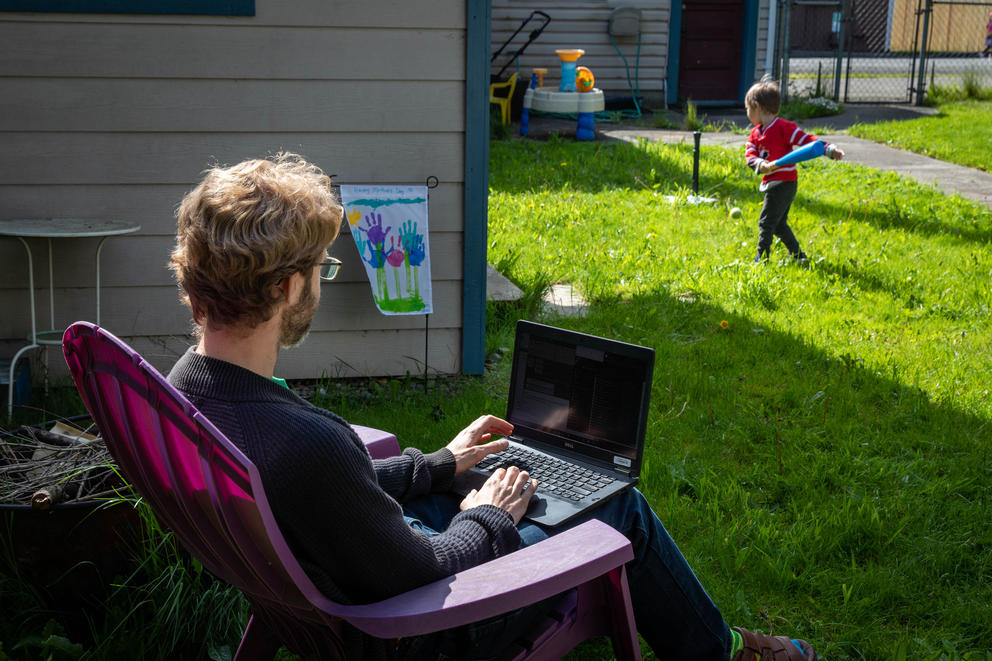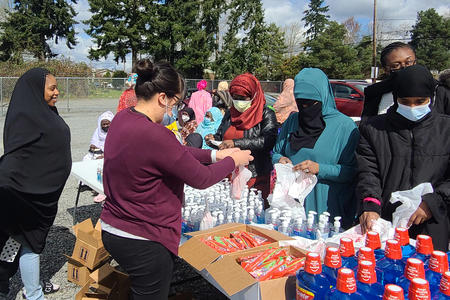Each month Johnson faces a race between food and time. Barely two weeks into May, Johnson had again drained her monthly food budget, she said, but managed to stretch a food bank pickup into June.
The Spanaway mother of five already cut spending after federal child tax credit payments ended in December. The monthly relief check, aimed at families, helped Johnson with rent and car expenses. Later this year, expanded food assistance is also set to expire, taking another bite out of Johnson’s food budget. She plans to limit her grocery list to the bare essentials.
“Meat would come first, then cans of vegetables,” Johnson said. “We won’t be able to afford any fresh vegetables.”
As COVID-19 numbers continue to fluctuate, some federal relief programs supporting families and children have started to disappear. This includes the child tax credit payments, universal free school meals and additional food assistance. State lawmakers have worked to partly replace some aid, but many families who relied on the expanded social safety net still struggle to get by with less help at a time when food and gas prices continue to surge amid the protracted pandemic.
“With food benefits going back to normal levels at a time when the price of food is going up, we are definitely going to see more families who need to access food banks and other food programs, and who will rely on friends and family in a way they haven't before,” said Babs Roberts, director of the community services division of the state Department of Social and Health Services.
For Johnson’s family, the pandemic remains far from over. Several members tested positive in the latest wave, leaving her with lingering symptoms and her husband temporarily out of work.
“They shouldn't stop this child tax credit and food stamps until this is all over,” she said. “It’s not fair. Our kids deserve to eat. We deserve to eat.”
Expanded social safety net
The American Rescue Plan temporarily increased the child tax credit and sent monthly payments — up to $300 per child under 6 and $250 for older kids — to families during part of last year. Households with kids also received an extra boost when the first stimulus checks went out at the very beginning of the pandemic.
The extra money helped many families afford basic needs, such as food and clothes, said Mary Fosse, an Everett City Council member. She also recently announced her bid for state representative in the 38th Legislative District.
Fosse described the child tax credit as a key safety net, providing relief to families during the ongoing uncertainty of the times.
“My family used it for groceries,” said Fosse, whose husband lost his job during the pandemic. “The child tax credit gave a lot of us a little breathing room.”
This story is a part of Crosscut’s WA Recovery Watch, an investigative project tracking federal dollars in Washington state.
The Center on Poverty and Social Policy at Columbia University reported that the payments lifted millions of children out of poverty. A study by the center found child poverty rates increased by 41% after 3.7 million fell into poverty when the payments stopped in January.
“In the middle of one of the worst economic and public health crises, we saw childhood poverty decline and the [child tax credit] played a huge role in that,” said Pedro Morillas, a campaign director at the Economic Security Project, an advocacy group with a mission of putting unrestricted cash in the hands of low-income households.
For some, a new tax rebate passed last year by Washington lawmakers might offset some of the gap starting next year. Modeled after the federal earned income tax credit, the state-level working families tax exemption will send yearly payments between $300 and $1,200 to workers making the least. The bill passed with broad support from both parties.
“Cash policies are only controversial in Congress,” Morillas said. “When you get serious conversation about the benefits of cash for kids and families, you get bipartisan support and agreement.”
Everett resident Ryan Webber said his family used the tax credit money to pay for child care as his wife reentered the workforce.
“The child tax credit changed our lives for the better. It helped get us out of debt and help us pay for child care and help get my wife back in the workforce,” Webber said. “I don’t know how any of those things would have happened before.”
After the family endured months of isolation during the pandemic, the first morning Webber took his son to day care was an emotional one.
“It brought tears to my eyes,” Webber said, “He’s finally with other kids and playing.”
Though with a limited budget and few nearby options, Webber’s child care doesn't last the entire workday, ending instead at 3:30 p.m. So in the last hour of work he juggles entertaining a 4½-year-old with his duties in a bank’s loan department. Many days, those 60 minutes are filled with snack requests and demands for attention.
The relief money also allowed the family to pay off credit debt. “Now we’re making enough to save for the future,” he said, “rather than just paying for the past.”
No more free lunch
The pandemic also marked the first time schools meals were free for all students, rather than just for low-income households or schools. The federally backed effort ended meal debt in the meantime, as food programs focused on getting healthy meals to students.
The waiver that allowed the U.S. Department of Agriculture to establish a universal free lunch program for all public school students expires at the end of this month. When this occurs, the USDA estimates the average school district will lose about 40% of its school lunch funding, according to the Washington Post.
Come summer, most Washington public schools will revert to charging students in the cafeteria.
“I think it’s horrible, charging kids for school lunch, especially after two years of us just feeding everyone,” said state Rep. April Berg, D-Mill Creek. “It was just nice to see them eating what they wanted when they wanted. They could just get in line. There was no weird song and dance: Do I have enough money? Do I remember my PIN number?”
It was one less thing families had to think about during the pandemic, said Berg, who also sits on the Everett Public Schools Board.
“And we are not out of COVID. Let's be real. It’s still harming communities. Everyday I’m talking to someone who has been exposed or who has gotten COVID,” Berg added. “We’re still talking about masks. We are talking about vaccines. It's hard to tell families it’s all over, it's all back to normal.”
Going back to charging students will be a big shock for families, especially as inflation continues to drive up food costs, Berg predicted.
Find tools and resources in Crosscut’s Follow the Funds guide to track down federal recovery spending in your community.
The universal free lunch program reached families who may not have qualified for the national subsidized meal program on paper, but still struggle to afford the high cost of living in the area, said Adam Pazder, director of food and nutrition at Everett Public Schools.
“We know locally a lot of families had a hard time the last two years,” said Pazder. He had just finished filling in a cafeteria shift serving meals to students as the latest COVID variant left the lunch room understaffed.
But, as Washington schools shift back to the pre-pandemic lunch program in July, more students will qualify for the subsidized meals than before because of a new state law. The free lunch program already allows schools with high numbers of students who qualify for subsidized meals the option of serving all students free of charge.
The new state bill makes participation mandatory for qualifying schools and provides funds to support the expansion, according to Mikhail Cherniske, an administrative program specialist with the Office of Superintendent of Public Instruction.
Cherniske said the change adds 90,000 students to the program, which previously covered about 240,000 students. Washington reported a total K-12 enrollment of nearly 1.1 million students in 2021.
Food assistance shrinks
State officials say families should also prepare for smaller food assistance payments. The program’s monthly allotments went up during the pandemic, but those extra dollars will go away once the Biden administration declares the ongoing public health emergency over. The emergency declaration could end as soon as next month.
During the pandemic, Washington state's food assistance program grew by 16%, hitting its highest level in January 2021 as new households joined. Over the past two years, about a half a million Washington families were enrolled in the basic food assistance program, according to data from the state Department of Social and Health Services. The COVID era expansion temporarily increased a typical family of two's food benefits by $155.
Even before this expanded assistance ends, many area food banks are seeing increased demand. According to a December report from the University of Washington’s Center for Public Health Nutrition, the percentage of households in the state experiencing food insecurity, uncertain about their ability to purchase enough food, jumped from 10% to more than 25%.
A perfect storm is brewing, according to Misha Werschkul, executive director of the Washington State Budget & Policy Center, with COVID era programs ending at a time when many families still need support coping with rising food and gas prices.
There is still time for Congress to act and extend these programs, said Werschkul. “That need doesn't go away,” she said, “just because the federal government doesn’t act.”
Food assistance for Regina Johnson, the Spanaway mother, doubled during the pandemic. Johnson said she usually spends the entire check on her first grocery run each month, making sure to stock up on packaged and canned foods.
“Because at the end of the month,” she said, “that’s what we rely on.”

